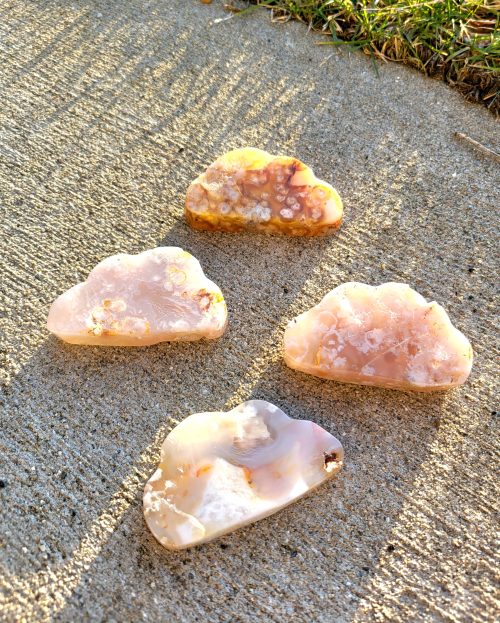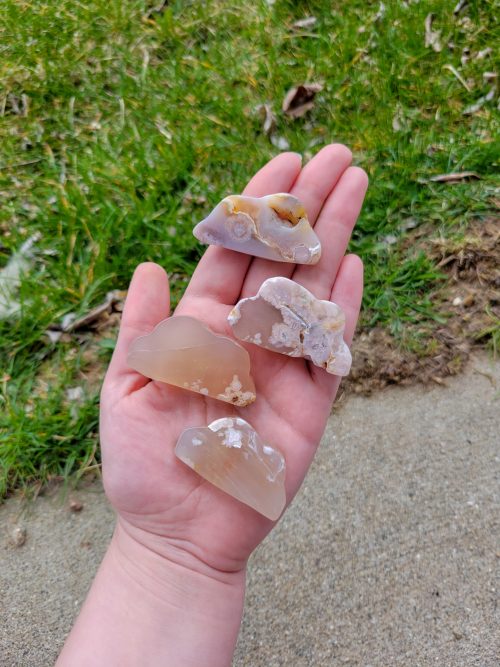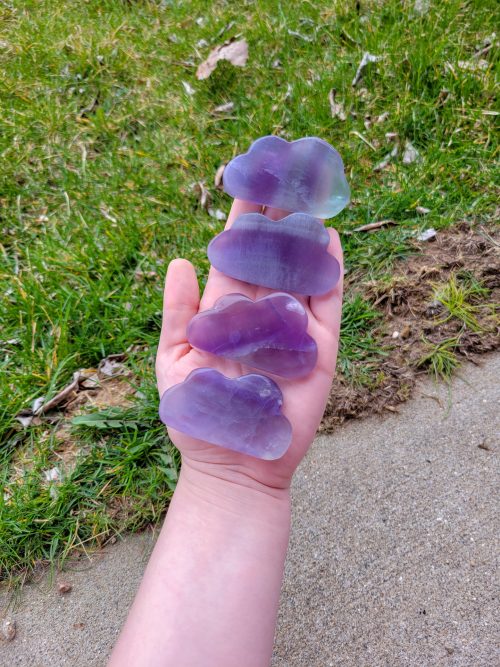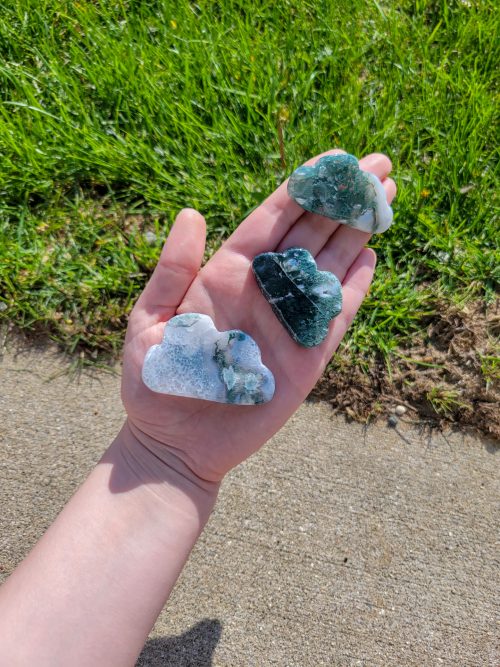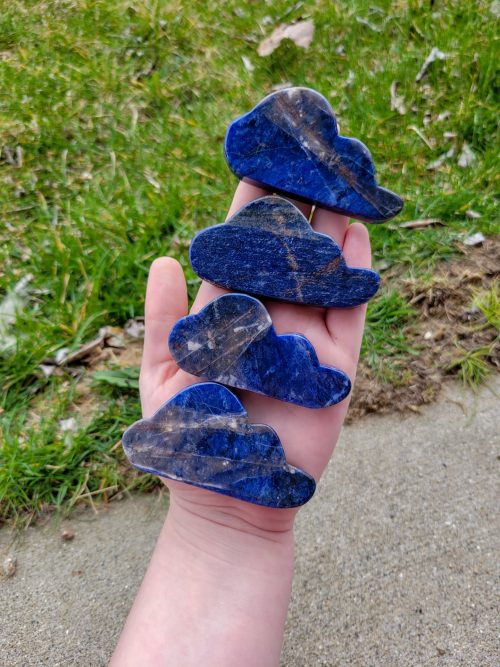-
7cm Wide Flower agate gets its name from the flower-like formations within the crystal's body. These crystals are volcanic rocks that are mainly composed of chalcedony and quartz. These crystals can vary in color; from pink to a dark grey/purple. Recently discovered in Madagascar, these crystals are believed to go back to 2000 BC. ***Due to natural variations in stones, the appearance will vary***
-
5cm Wide Flower agate gets its name from the flower-like formations within the crystal's body. These crystals are volcanic rocks that are mainly composed of chalcedony and quartz. These crystals can vary in color; from pink to a dark grey/purple. Recently discovered in Madagascar, these crystals are believed to go back to 2000 BC. ***Due to natural variations in stones, the appearance will vary***
-
6cm - 7cm Wide Flower agate gets its name from the flower-like formations within the crystal's body. These crystals are volcanic rocks that are mainly composed of chalcedony and quartz. These crystals can vary in color; from pink to a dark grey/purple. Recently discovered in Madagascar, these crystals are believed to go back to 2000 BC. ***Due to natural variations in stones, the appearance will vary***
-
6.75cm Wide Fluorite is composed of fluorine and calcium and is formed in hydrothermal veins in the Earth's crust. This mineral can be found in all colors of the rainbow with different hues. The different colors in Fluorite are caused by impurities within the mineral. The deeper colors are found in well-formed crystals. Fluorite was originally discovered in Illinois in 1842 but is no longer mined in the US. It can be found in China, South Africa, Mongolia, France, and Russia. ***Due to natural variations in stones, the appearance will vary***
-
6.25cm Wide Fluorite is composed of fluorine and calcium and is formed in hydrothermal veins in the Earth's crust. This mineral can be found in all colors of the rainbow with different hues. The different colors in Fluorite are caused by impurities within the mineral. The deeper colors are found in well-formed crystals. Fluorite was originally discovered in Illinois in 1842 but is no longer mined in the US. It can be found in China, South Africa, Mongolia, France, and Russia. ***Due to natural variations in stones, the appearance will vary***
-
6cm Wide Moss agate is a semi-precious stone. It is a variety of Chalcedony and it formed from silicon dioxide. The field of this stone is a milky white or clear quartz with blue and green inclusions that form as a result of oxides in the mineral. The dendritic inclusions are mainly made from manganese or iron that grow into patterns to give it the moss look. ***Due to natural variations in stones, the appearance will vary***
-
5.5cm Wide Moss agate is a semi-precious stone. It is a variety of Chalcedony and it formed from silicon dioxide. The field of this stone is a milky white or clear quartz with blue and green inclusions that form as a result of oxides in the mineral. The dendritic inclusions are mainly made from manganese or iron that grow into patterns to give it the moss look. ***Due to natural variations in stones, the appearance will vary***
-
5cm Wide Moss agate is a semi-precious stone. It is a variety of Chalcedony and it formed from silicon dioxide. The field of this stone is a milky white or clear quartz with blue and green inclusions that form as a result of oxides in the mineral. The dendritic inclusions are mainly made from manganese or iron that grow into patterns to give it the moss look. ***Due to natural variations in stones, the appearance will vary***
-
8cm Wide Sodalite is a rare mineral formed inside igneous rocks crystalized as a result of sodium-rich magma. The blue color comes from the rock that Sodalite is formed in; nepheline syenite, trachyte, and phonolite. Although the sodalite-bearing rock is rare, it can most commonly be found in the US, Canada, and Africa. ***Due to natural variations in stones, the appearance will vary***

